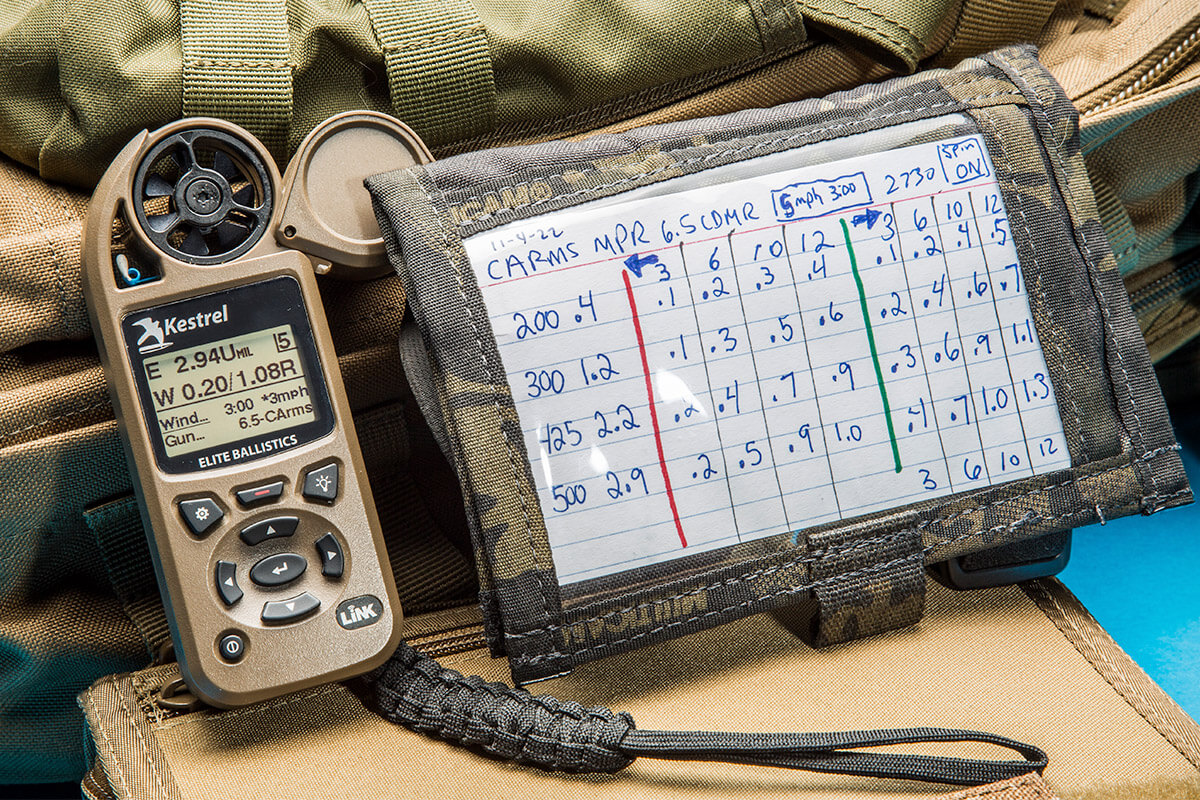Ballistics Basics: Understanding Internal & External Ballistics

Introduction to Ballistics
Ballistics is the science that studies the motion and behavior of projectiles, particularly bullets. For precision rifle shooters, understanding ballistics isn't just academic—it's essential for consistent accuracy, especially at extended ranges where even minor variables can dramatically affect bullet impact.
In this comprehensive guide, we'll break down the complex world of ballistics into digestible concepts that will help you make better shooting decisions. Whether you're new to long-range shooting or looking to refine your understanding, mastering these ballistic fundamentals will elevate your precision rifle game.
The Three Branches of Ballistics
Ballistics is typically divided into three main branches, each covering a different phase of a bullet's journey:
- •Internal Ballistics: What happens inside the firearm before the bullet exits
- •External Ballistics: The bullet's flight from muzzle to target
- •Terminal Ballistics: What happens when the bullet strikes the target
In this article, we'll focus on internal and external ballistics, which form the foundation of precision shooting. For information on terminal ballistics and practical applications, see our companion article on Advanced Ballistics.
1. Internal Ballistics
Internal ballistics covers everything that happens from the moment you pull the trigger until the bullet leaves the barrel. This includes:
Ignition and Pressure
When the firing pin strikes the primer, it creates a small explosion that ignites the main powder charge. This rapid burning of powder generates gas pressure that forces the bullet down the barrel.
Key factors affecting internal ballistics include:
- •Powder type and charge: Different powders burn at different rates, affecting pressure curves and velocity
- •Chamber dimensions: Affect how the cartridge headspaces and how pressure develops
- •Bullet seating depth: Influences the initial pressure spike and powder burn rate
- •Barrel length: Determines how long the expanding gases can accelerate the bullet
Barrel Harmonics
As the bullet travels down the barrel, the barrel itself vibrates in a specific pattern. These vibrations, known as harmonics, affect accuracy and consistency.
Pro Tip: Finding the optimal load for your rifle often means finding a combination of powder charge, bullet weight, and seating depth that works in harmony with your barrel's natural vibration pattern.
Muzzle Velocity
The speed at which the bullet exits the barrel is called muzzle velocity, typically measured in feet per second (fps). This is one of the most critical factors in external ballistics and is influenced by:
- •Powder charge: More powder generally means higher velocity (within safe pressure limits)
- •Bullet weight: Heavier bullets typically exit slower with the same powder charge
- •Barrel length: Longer barrels generally produce higher velocities (up to a point)
- •Temperature: Warmer temperatures typically increase velocity
"Understanding internal ballistics is the foundation of precision reloading. The decisions you make at the loading bench directly affect what happens downrange." — Dr. Thomas Reynolds
2. External Ballistics
External ballistics is what most shooters think of when discussing ballistics—the bullet's flight from muzzle to target. This is where physics takes over, and several forces act on the bullet:
Gravity
From the moment a bullet leaves the barrel, gravity begins pulling it downward at a constant rate (approximately 9.8 m/s² or 32.2 ft/s²). This creates the characteristic arc or trajectory of the bullet.
Bullet Drop: The farther the bullet travels, the more time gravity has to pull it downward. This is why we need to adjust our elevation (come "up" on the scope) for longer shots.
Drag and Air Resistance
As a bullet moves through the air, it encounters resistance that continuously slows it down. This deceleration affects trajectory and is influenced by:
- •Bullet shape: More aerodynamic bullets (higher ballistic coefficient) retain velocity better
- •Velocity: Faster bullets generally experience more drag
- •Air density: Affected by altitude, temperature, humidity, and barometric pressure
Ballistic Coefficient (BC)
The ballistic coefficient is a measure of how efficiently a bullet cuts through the air. A higher BC means the bullet is more aerodynamic and will resist drag better.
Modern precision rifle bullets are designed with high BCs to maintain velocity, resist wind deflection, and deliver flatter trajectories at long range.
Wind Deflection
Wind is one of the most challenging factors in long-range shooting. It pushes the bullet sideways during flight, requiring windage adjustments.
Key wind considerations include:
- •Wind speed: Faster winds cause more deflection
- •Wind angle: A full-value crosswind (90° to the bullet path) has maximum effect
- •Distance: Longer shots give the wind more time to affect the bullet
- •Bullet design: Higher BC bullets resist wind better
For a deeper dive into this critical topic, see our article on advanced wind reading techniques.
Gyroscopic Stability and Spin Drift
Rifle barrels have spiral grooves (rifling) that cause the bullet to spin, stabilizing it in flight. This spin creates gyroscopic effects:
- •Stability: Adequate spin keeps the bullet flying point-forward
- •Spin drift: The rotation causes the bullet to drift slightly (usually to the right for right-hand twist barrels)
- •Twist rate: Expressed as 1:X (one complete rotation in X inches), must be matched to bullet length
Pro Tip: Heavier, longer bullets generally require faster twist rates (lower X number) for proper stabilization.
Coriolis Effect
At extreme long ranges (typically beyond 1,000 yards), the Earth's rotation can actually affect bullet trajectory:
- •Horizontal component: Causes drift based on shooting direction (east/west)
- •Vertical component: Affects apparent gravity based on latitude and direction
While negligible for most shooting scenarios, elite long-range competitors and military snipers account for Coriolis in their calculations for extreme distance shots.
Common Misconceptions About Internal & External Ballistics
Myth: Bullets Rise After Leaving the Barrel
Bullets never rise above the bore axis. The appearance of "rise" comes from the fact that the scope sits above the barrel. When zeroed, the barrel is actually angled slightly upward relative to the line of sight through the scope.
Myth: Higher Velocity Always Means Better Accuracy
While velocity is important, extreme velocity can actually reduce accuracy if it exceeds the optimal stability range for a particular bullet. Many precision shooters use loads slightly below maximum velocity for better consistency.
Myth: Heavier Bullets Are Always Better in Wind
While heavier bullets of the same design tend to have higher BCs, bullet shape and construction matter more than weight alone. A lighter bullet with superior aerodynamics may outperform a heavier, less efficient design.
Conclusion
Understanding internal and external ballistics provides the foundation for precision shooting. By mastering these concepts, you'll be better equipped to select the right components, develop accurate loads, and make proper adjustments in the field.
In our companion article, Advanced Ballistics: Terminal Effects & Practical Applications, we explore what happens when bullets strike targets and how to apply ballistic knowledge in practical shooting scenarios.
For more information on improving your precision rifle skills, check out our articles on long range shooting fundamentals and wind reading techniques.
Have questions about ballistics or want to share your own experiences? Join the discussion in the comments section below or connect with us at our next Bolt Gun Nation event.
Related Resources
- •Advanced Ballistics: Terminal Effects & Practical Applications
Explore terminal ballistics and practical applications for precision rifle shooters.
- •Long Range Shooting Fundamentals: Master the Basics for Improved Precision
Learn the core principles and techniques of long range precision shooting.
- •Wind Reading Techniques for Precision Rifle Shooters
Master the art of reading wind conditions to improve your long-range accuracy.
- •Essential Equipment Recommendations for Precision Rifle Shooting
A comprehensive guide to the required and recommended equipment for precision rifle shooting.

Zander Bolyanatz
Zander is the founder of Bolt Gun Nation and an experienced precision rifle shooter. With a background in competitive shooting and firearms instruction, he brings practical knowledge and insights to the world of long-range shooting and ballistics.